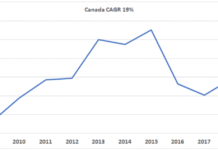Last month, I wrote about how Ontario, North America’s 6th largest jurisdiction by population, had tabled a Green Energy Act to boost the alternative energy industry’s growth in the province. In that post, I mentioned that officials would soon release the rules for a feed-in tariff (FIT) system. FITs, which pay fixed rates for renewable power, are all but absent in North America, although they are popular incentive in Europe. Germany’s FIT is largely responsible for that country’s dominance in solar PV today despite mediocre sun conditions.
Ontario released the draft rules and proposed prices for its FIT a few hours ago. Proposed prices are as follows:
| Fuel Type | Size Tranches | C$/kWh | US$/kWh (x0.79) |
| Biomass* | Any size | 12.2 | 9.6 |
| Biogas* | ≤ 5 MW | 14.7 | 11.6 |
| > 5 MW | 10.4 | 8.2 | |
| Waterpower* | ≤ 50 MW | 12.9 | 10.2 |
| ≤ 2 MW (community-based or aboriginal) | 13.4 | 10.6 | |
| Landfill gas* | ≤ 5 MW | 11.1 | 8.8 |
| > 5 MW | 10.3 | 8.1 | |
| Solar PV | ≤ 10 kW (rooftop) | 80.2 | 63.4 |
| 10 – 100 kW (rooftop) | 71.3 | 56.3 | |
| 100 – 150 kW (rooftop) | 63.5 | 50.2 | |
| > 500 kW (rooftop) | 53.9 | 42.6 | |
| ≤ 10 MW (ground mounted) | 44.3 | 35.0 | |
| Wind | Any size onshore | 13.5 | 10.7 |
| Any size offshore | 19.0 | 15.0 | |
| Community-based or aboriginal (≤ 10 MW) | 14.4 | 11.4 | |
| * 35% premium during weekday on-peak hours (11am to 7pm) and 10% discount during off-speak hours | |||
The suggested pricing levels are relatively high and, as discussed in my original article on this topic, should benefit the clean energy independent power producers active in the province. Of special interest is the fact that Ontario is proposing to implement a tariff for offshore wind, and could thus be the first Great Lakes jurisdiction to see significant offshore installations go up (that is, if they get the tariff right!). The solar PV tariffs are based on the tiered German approach and should trigger significant installations if credit doesn’t prove to be a problem for households and businesses.
To be continued…









A lot of us in the solar space are really interested in the Ontario FIT. Is there any clarity on _when_ the final residential FIT rates will be approved and people can start putting solar on their roofs.
As of May 30, 2009, the latest update on this can be found here: http://www.powerauthority.on.ca/FIT/Page.asp?PageID=924&ContentID=10180
I haven’t followed the situation as closely in the past few weeks so I’m not sure what the timeline is for releasing final rules and tariffs. The Bill behind this was made into law a few weeks ago so I wouldn’t expect it to take too much longer.
This program is way too rich and is set up in exactly the wrong way. This is Spain II. To fix it, there should be a volume based reduction in the FIT for EVERY category.
Jigar:
You may remember that this isn’t Ontario’s first shot at an FIT. Last time around, it ended in disaster with the government effectively canceling the program with no prior warning because there were too many MW-size installations going up and they were worried about transmission bottlenecks.
They had completely mis-planned the program and had no contingency procedures in case growth over- or under-shot their forecasts.
Ontario policy-makers, when it comes to electricity, are mediocre at best. I would not be surprised to see this program canned or substantially scaled back within 18 to 24 months. Although some improvements have been made since the first attempt at this, a number of issues remain that could act as spokes in the wheel. However, in all fairness, the final rules haven’t yet been released.
Ontario typically honors its contracts (PPAs under the FIT are issued by a proxy of the government), so I still think that some of the public Canadian IPPs with an active presence in the province will benefit from this by locking in attractive rates, not only in solar PV but also in wind.